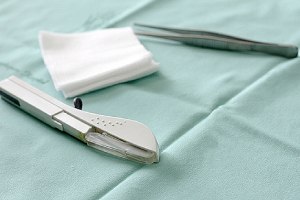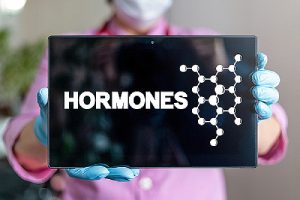 If you are wondering about getting a Nexplanon implant but are unsure what it involves, you may be happy to know that the procedure is simple, fast, and virtually painless. Within no more than one week after you have the implant, you will be protected against becoming pregnant for up to three years. It is over 99% effective, and you never have to remember to take a pill or worry about doing anything else to prevent pregnancy.
If you are wondering about getting a Nexplanon implant but are unsure what it involves, you may be happy to know that the procedure is simple, fast, and virtually painless. Within no more than one week after you have the implant, you will be protected against becoming pregnant for up to three years. It is over 99% effective, and you never have to remember to take a pill or worry about doing anything else to prevent pregnancy.
How Is Nexplanon Inserted?
You will begin the process by scheduling an initial appointment with your healthcare provider. During that appointment, your healthcare provider will do a physical examination and review your medical history with you to make sure the Nexplanon implant is safe for you. During that appointment, your healthcare provider will describe the Nexplanon insertion procedure, explain how it works, and answer any questions you may have about it. Once implanted, it will release a small amount of a progestin hormone each day. The hormone is estrogen-free, and it prevents pregnancy in three ways: 1) by stopping you from ovulating, 2) by thickening the mucus in your cervix so that sperm cannot reach an egg, and 3) by changing your uterine lining to prevent any fertilized egg from attaching itself to your uterus.
You will also be asked to give a urine sample to ensure that you are not pregnant. Nexplanon cannot be used if you are pregnant. If you are taking any prescription or over the counter medicines, your healthcare provider will need to know about it. Some medications and supplements can impair the effectiveness of Nexplanon, and you may have to cease using those substances before getting Nexplanon. After completing your initial appointment, you will be ready for the implant procedure.
The Steps in the Nexplanon Insertion Procedure
The Nexplanon insertion procedure is done by a healthcare provider who has been specially trained to do it. The Nexplanon implant device will be placed discreetly under the skin on the inside of your upper arm. The procedure is a simple, minor surgical procedure that takes only minutes to complete.
Patient Is Numbed
 First, your healthcare provider will inject Lidocaine under your skin in the area on your arm where the device will be implanted. The Lidocaine will numb the area so that you will not feel any pain during the implant procedure. When the Lidocaine is first injected, you may experience stinging and tingling on your skin, which will subside quickly.
First, your healthcare provider will inject Lidocaine under your skin in the area on your arm where the device will be implanted. The Lidocaine will numb the area so that you will not feel any pain during the implant procedure. When the Lidocaine is first injected, you may experience stinging and tingling on your skin, which will subside quickly.
Implant Is Guided in By an Applicator
Once you are properly numb, your healthcare provider will use a specially designed applicator to insert the implant. The applicator helps to ensure that the implant is placed in the correct location in your arm. The applicator is designed to position the implant correctly, just under your skin where it will be most effective.
Once the device is implanted, you will be asked to touch it to confirm that it is in position.
What to Expect After the Nexplanon Insertion?
For 24 hours after the Nexplanon insertion procedure, you will wear a pressure bandage to cover the implant site on your arm. You will then wear a band-aid for three to five days after that.
Mild Soreness and Healing
You may experience bruising and soreness after the Nexplanon insertion procedure. These symptoms will subside in a few days. After that, you will be able to feel the implant under your skin if you touch the area; otherwise, you will not know the implant is there.
Possible Side Effects
 Some women experience side effects from the Nexplanon implant. The most common side effects are its effects on your menstrual cycle. Many women with Nexplanon experience irregular bleeding. Others will have no period at all while using the device. For women who experience problematic bleeding with Nexplanon, the device can be easily removed and a different birth control option utilized.
Some women experience side effects from the Nexplanon implant. The most common side effects are its effects on your menstrual cycle. Many women with Nexplanon experience irregular bleeding. Others will have no period at all while using the device. For women who experience problematic bleeding with Nexplanon, the device can be easily removed and a different birth control option utilized.
Other side effects that you may experience after a Nexplanon insertion procedure are similar to the pill or a hormonal IUD. Not every woman will experience all of these side effects and some women report having very few or very mild side effects. They can include moodiness, tenderness in the breasts, bloating, headaches, nausea, and modest weight gain.
Contact the Specialists at Raleigh Gynecology and Wellness to Schedule Your Appointment for Nexplanon Insertion Procedure
To schedule an appointment for a Nexplanon implant, contact the experts at Raleigh Gynecology and Wellness. They are available to explain how Nexplanon works, describe the many benefits it offers, and answer any questions you may have about it.

 Your IUD can be removed whenever you are ready to become pregnant.
Your IUD can be removed whenever you are ready to become pregnant.  Whether you used a hormonal IUD or a copper IUD, your body’s natural fertility is not affected by the removal procedure. Once your IUD is removed, your menstrual cycle will typically return to normal within a month. It will not be long afterward that you are able to become pregnant.
Whether you used a hormonal IUD or a copper IUD, your body’s natural fertility is not affected by the removal procedure. Once your IUD is removed, your menstrual cycle will typically return to normal within a month. It will not be long afterward that you are able to become pregnant. Notwithstanding your immediate fertility, some doctors recommend their patients wait for a cycle or two after IUD removal before trying to conceive. By waiting, it is easier to track your cycle and determine the exact date of conception.
Notwithstanding your immediate fertility, some doctors recommend their patients wait for a cycle or two after IUD removal before trying to conceive. By waiting, it is easier to track your cycle and determine the exact date of conception. Your IUD can protect you against unwanted pregnancy for up to ten years, depending on the device you have. When you want to become pregnant, you need to have your IUD removed. You can have it removed at any time. Once it is removed, you may be able to get pregnant within the same month. How long does it take to get pregnant after IUD removal depends on the type of device you have and where you are in your monthly cycle.
Your IUD can protect you against unwanted pregnancy for up to ten years, depending on the device you have. When you want to become pregnant, you need to have your IUD removed. You can have it removed at any time. Once it is removed, you may be able to get pregnant within the same month. How long does it take to get pregnant after IUD removal depends on the type of device you have and where you are in your monthly cycle.  However,
However,  After the removal of a non-hormonal, or copper IUD, your body will not need time to return to a normal cycle. The copper IUD did not use hormones to boost its effectiveness. Without those hormones, your body’s cycle was not affected by the IUD. Thus, you are immediately fertile. You may experience minor spotting and bleeding which can interfere with accurately timing the beginning and end of your cycle, but it has no impact on your fertility.
After the removal of a non-hormonal, or copper IUD, your body will not need time to return to a normal cycle. The copper IUD did not use hormones to boost its effectiveness. Without those hormones, your body’s cycle was not affected by the IUD. Thus, you are immediately fertile. You may experience minor spotting and bleeding which can interfere with accurately timing the beginning and end of your cycle, but it has no impact on your fertility. One of the most effective and convenient forms of birth control is the Nexplanon implant. Learn why it has become so popular among women looking for a safe and reliable way to prevent unwanted pregnancy.
One of the most effective and convenient forms of birth control is the Nexplanon implant. Learn why it has become so popular among women looking for a safe and reliable way to prevent unwanted pregnancy. There are many reasons why Nexplanon has become a leading choice of women seeking a convenient form of birth control. Chief among them include:
There are many reasons why Nexplanon has become a leading choice of women seeking a convenient form of birth control. Chief among them include: Nexplanon contains only the single hormone etonogestrel, which does not include estrogen. If you are one of many women who cannot use estrogen due to certain health problems, you may be able to use the Nexplanon implant safely.
Nexplanon contains only the single hormone etonogestrel, which does not include estrogen. If you are one of many women who cannot use estrogen due to certain health problems, you may be able to use the Nexplanon implant safely. For reliable and convenient birth control, a Nexplanon implant should be an option at the top of your list. It is 99% effective, which means fewer than one out of 100 women who use Nexplanon will get pregnant each year. It is completely reversible, so if you decide you’d like to get pregnant during that time, you can simply have the implant removed.
For reliable and convenient birth control, a Nexplanon implant should be an option at the top of your list. It is 99% effective, which means fewer than one out of 100 women who use Nexplanon will get pregnant each year. It is completely reversible, so if you decide you’d like to get pregnant during that time, you can simply have the implant removed. If you get a Nexplanon implant during the first five days of your period, it is immediately
If you get a Nexplanon implant during the first five days of your period, it is immediately  Nexplanon implants are very safe for most women. Serious problems with Nexplanon are rare. More commonly, you may experience arm pain that lasts for longer than a few days, an infection in the arm resulting from the implant procedure, or a small scar on your arm where the implant was inserted. Occasionally, the implant can break and must be replaced, or slip out of place and require a surgical procedure to have it removed.
Nexplanon implants are very safe for most women. Serious problems with Nexplanon are rare. More commonly, you may experience arm pain that lasts for longer than a few days, an infection in the arm resulting from the implant procedure, or a small scar on your arm where the implant was inserted. Occasionally, the implant can break and must be replaced, or slip out of place and require a surgical procedure to have it removed.